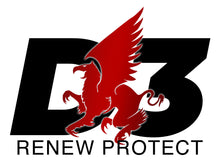
TIRE DRY ROT? WHY !?!
RV/Golf Cart/Motorcycle-Safe Protectants for Tire Preservation & Tire Dry Rot Prevention
There are two main degrading agents that attack tires, plastic, and vinyl—ultraviolet (UV) light and ozone. Both attack the long hydrocarbon chains of the rubber, trim, and vinyl skin by breaking these bonds, shortening the molecules with a resulting loss of elasticity and other properties.
Tire manufacturers add two primary sacrificial protectants to rubber. To protect against UV, manufacturers add carbon black. Therefore, tires and trim are almost always black. The carbon black will turn white or gray as it absorbs and transforms the UV energy and disperses it as heat. To protect against ozone, tire manufacturers add a synthetic wax-based sacrificial protectant. The ozone attacks the wax and gradually depletes it. As the tire rolls, additional wax is forced to the surface of the tire. This process is often referred to as ‘blooming.' This oxidized wax will appear brown on the tire surface. This blooming slowly refreshes the surface wax protectant. A tire that has not had regular use and flexed will have the wax depleted by ozone and thus begin to degrade and suffer dry rot. Solvent-based silicone and oil products, which are the most commonly advertised ‘protectants,' actually dissolve the wax and cause premature fading and sidewall cracking. Nationally advertised protectants contain harsh petroleum surfactants and are most often blended with glycol (antifreeze) to prevent drying and provide a wet and shiny look. Unfortunately, the glycol also keeps the harmful surfactants wet and active on the surface. This will degrade any materials to which these types of products are applied. Many tire manufacturers may not honor their warranties if they detect the use of such protectant products.
Silicone protectants also present a health and liability risk. That shiny and slick silicone surface and its solvents are a risk on two levels. They are very dangerous to use on vehicle interiors. Protectants, old-school type or newer ceramic coatings, can present a slip hazard. They can make steering wheels and pedals slick and expose occupants to toxins. These protectants are not safe for use on vehicles such as boats, golf carts, and motorcycles! If you read the fine print on labels and brand websites you will find disclaimers about these risks.
Protectant Check: If it feels slick or greasy after application, it will slowly destroy your tires.
Vinyl surfaces have a protective skin that is depleted by off-gassing. Plastic will also slowly off-gas and degrade from weathering. This appears as fading and eventually cracking. Again, typical protectants will break down the surface, hastening the premature formation of fading and cracks. Another negative, which you have likely experienced, is that silicone also attracts dirt and dust particles. A quality protectant should contain a strong UV-blocking compound to bolster the efforts of the carbon black and should not contain surfactants that remain active after applied.
Ceramic coatings and ceramic protectants have flooded the marketplace. We first introduced quartz and titanium blends into our full product line in 2015. There are now many cheap copies and many products claiming to contain ceramics. The majority of these are not ceramic. Polysiloxane is most often what you are buying with these ‘cheap ceramics.' Polysiloxane is just a step above silicone protectants, yet only gives the user a bit more longevity and no ceramic qualities or abilities.
True ceramic provides excellent protection and an enhancement of color and shine. Ceramics do not qualify as true restoration products, yet are often marketed as such. If your fleet is new or near-new condition, a real ceramic may be all you need. D3 RENEW PROTECT has always preferred to take ceramic a step further. Since 2015 we have always maintained a ‘ceramic-hybrid’ product line. This hybrid gives the user a true 100% or better OEM renewal and all the strong benefits of ceramics.
D3 RENEW PROTECT supplies essential feeder elements that restore the original composition (OEM) of the substrate while creating a polymer/ceramic hybrid dry-seal ozone and UV block with strong thermal stability via silica quartz, zinc, and titanium nano oxides. This technology also slows the blooming and off-gassing processes and greatly enhances the retention of protective elements within the surface. D3 RENEW PROTECT BLAK contains a high level of carbon black and is ideal for the restoration of faded black surfaces. SATN is also maxed-out with UV radiative transfer agents, which gives a moderate to low shine achieved with oxides and nano oxides. GLOZ also contains these elements and provides a high direct refractive index and high shine. These products can also be layered for even greater protection and longevity. This can be done with BLAK serving as a base coat, to be followed with one treatment of GLOZ or SATN.
BLAK, SATN, and GLOZ are silicone- and oil-free and contain no active solvents. The products are low-VOC and non-slip motorcycle and golf cart-safe protectants. They create a dry-seal finish without the run-off of toxic solvents and glycol produced by typical 'protectants.’
Dorus Rudisill
Product Development
D3 RENEW PROTECT Manufacturing LLC

